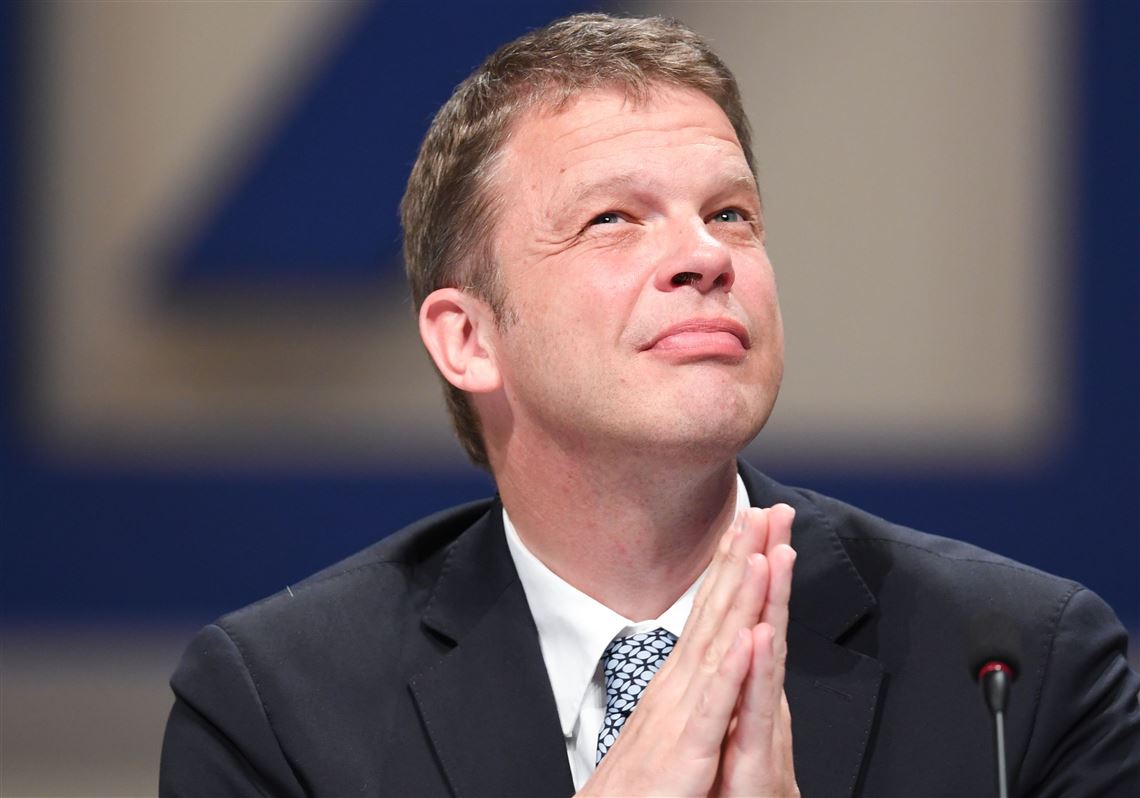The appointment of Christian Sewing as Deutsche Bank’s chief executive officer to replace an embattled John Cryan after less than three years -- and three turnaround plans -- answered just one of the questions hanging over the struggling institution.
There’s the fate of chairman Paul Achleitner and whether a divided board can close ranks behind the new CEO. Mr. Sewing also confronts a decision on scaling back the investment bank -- both Deutsche Bank’s biggest source of revenue and a perennial laggard against U.S. giants -- and winning over long-suffering shareholders.
“They are in a mess and the mess starts with the board,” Carlo Besenius, CEO of Creative Global Investments, a financial consultancy, said in an interview from Luxembourg. “They won’t get shareholder credibility” unless struggling businesses are shut and they “rebuild from within.”
The ouster of Mr. Cryan capped an embarrassing two-week run for the 148-year-old lender. Media reports highlighted tension with Mr. Achleitner and speculated that the 57-year-old CEO was on his way out. Without any response from Deutsche Bank, the Briton was essentially hung out to dry amid news of the search for a successor.
After sounding out external candidates -- including JPMorgan Chase’s Matt Zames and Bank of America’s Christian Meissner -- the bank’s directors rushed to bring some order to the situation. Late night on Sunday, they picked Mr. Sewing, a Deutsche Bank veteran who served as co-deputy CEO with the now-departed Marcus Schenck since one of Mr. Cryan’s strategy reboots in March 2017.
“Sewing may not necessarily have been the top candidate but he was there and stood ready,” Hans-Peter Burghof, a professor of banking at the University of Hohenheim in Stuttgart.
The supervisory board wasn’t unanimous in adopting some of the measures proposed by Mr. Achleitner, according to people with knowledge of the meeting. One sticking point was the decision to name Garth Ritchie as head of the investment bank, one person said.
The tumult underscored the frustration of stakeholders over Mr. Cryan’s inability to blaze a path toward a profitable future. The stock lost more than half its value during his tenure and trades at about a third of the value of its assets; in contrast JPMorgan Chase trades at more than 1.5 times its book value.
The bank has struggled to recover since the financial crisis that exploded a decade ago. The company’s rapid expansion under Josef Ackermann as a global investment bank saddled it with an unwieldy structure and a culture of excessive risk-taking, critics say. Mr. Sewing will head the third leadership team since Mr. Ackermann’s 2012 departure.
Deutsche Bank has spent more than $17 billion paying fines and settling litigation since the start of 2008, according to company filings and other disclosures compiled by Bloomberg.
Mr. Sewing’s background suggests directors may keep at least one key plank of Mr. Cryan’s strategy: a greater focus on Germany. Its home market accounted for 37 percent of Deutsche Bank revenue last year, up from 35 percent in 2016, according to its annual report. The German weekly Die Zeit called for it to merge with Commerzbank “in the interests of bank and country.”
That would signal a scaling back of the investment bank. Davide Serra, CEO of Algebris Investments, says that Deutsche Bank lacks the scale to compete with the likes of JPMorgan and Goldman Sachs.
Once Mr. Sewing gets his team in place, his two biggest tasks will play out over months. The bank’s once-vaunted investment bank division has lagged rivals for several straight quarters now, with CFO James Von Moltke recently warning of headwinds last quarter.
“Our start to the year was solid but ‘solid’ cannot be our ambition,” Mr. Sewing said in a memo to staff, his first comments since his promotion. “With regard to our revenues we have to regain our hunger for business.”
The bank has launched a wide-ranging review of the division with a focus on its U.S. operations dubbed Project Colombo, people with knowledge of the matter said previously.
The corporate and investment bank will look to “free up capacity for growth by pulling back from those areas where we are not sufficiently profitable,” according to a memo to staff released on Monday.
Mr. Sewing, who has experience in risk management and audit and has never worked in the investment bank, is keen to have a roughly balanced revenue share for the bank from its two core units, according to people familiar with this thinking. In practice, that suggests eliminating some businesses with staff reductions and spending cuts.
Last year, the investment bank contributed 54 percent to group revenue and the retail division 38 percent. Meanwhile, income from sales and trading fell to the lowest level since the financial crisis despite repeated promises by Mr. Cryan.
The other key challenge lies in Deutsche Bank’s consumer unit. The bank last year announced the merger of its two domestic retail units, abandoning previous plans to sell one of them, Postbank.
While the bank has recently said that its plan to merge the two units remains on track for the second quarter, it has also pledged to achieve annual cost synergies of 900 million euros by the end 2020, to a large extent by cutting the workforce. Deutsche Bank’s management hopes to do away with as much as 6,000 retail bank jobs in Germany, people with knowledge said previously.
“What’s missing is the guiding hand behind this,” said Mr. Burghof. “It feels like there isn’t really a plan.”
That frustration signals why Mr. Achleitner may be vulnerable. Some investors said that Mr. Achleitner shared the blame with Mr. Cryan for the bank’s troubles.
“He’s been in office since 2012, and as it turns out has made a lot of bad decisions,” said Andreas Meyer, who manages about 1.4 billion euros of fixed-income securities at Aramea Asset Management in Hamburg. “He should carry the responsibility for that and leave. I don’t believe it will happen, but that’s what I’d prefer.”
First Published: April 12, 2018, 1:15 p.m.


